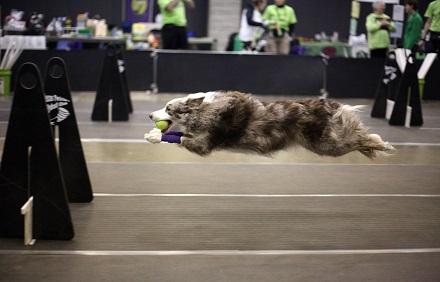
The North American Flyball Association (NAFA) was established in 1984 when a dozen Flyball clubs banded together to further the sport.
Flyball races match two teams of four dogs each, racing in side-by-side lanes over a 51-foot long course. Each dog must run in relay fashion down the jumps, trigger a Flyball box that releases a tennis ball, retrieve the ball, and return back over the jumps. The next dog is then released to run the course but can't cross the start/finish line until the previous dog has returned. The first team to have all 4 dogs finish the course without error wins the heat.
Today, with over 700 registered clubs and 16,000 registered dogs, NAFA is recognized as the world's leading authority on Flyball and the sport's top sanctioning organization. NAFA is a nonprofit organization. The NAFA racing year begins on October 1 and extends through September 30 of the following calendar year.
Sports Destination Management: Flyball is a unique sport. How long has it been around?
Steve Corona: Flyball got its start in the 1970's when Californian Herbert Wagner developed the first tennis ball launcher. Subsequently, the new sport for dog enthusiasts was introduced in the Toronto - Detroit area by several dog training clubs. After a few small tournaments were held in conjunction with dog shows, the first ever Flyball tournament was held in 1983. Herbert is also credited with developing the first Flyball box, and apparently he did a Flyball demo on the Tonight Show with Johnny Carson that got a lot of people’s attention.
SDM: National TV exposure is a great thing for a dog sport.
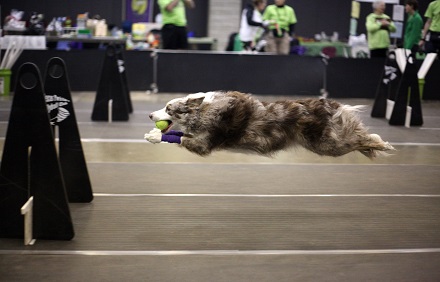
Atthe same time, I believe there has been a change in the way people view their dogs. Dogs started being looked at as a part of the family rather than just a working animal. It led to people looking for things they could do with their dogs and out of that came dog sports.
SDM: Does NAFA prefer any specific breeds of dogs?
Corona: We accept all dogs and all breeds. We don’t have any restrictions against the bully breeds; in fact, we try to find venues that don’t have restrictions against those breeds, or any others.
SDM: Are there special divisions for dogs that don’t have the same physical abilities?
Corona: We actually do have a few three-legged dogs that compete, and I’ve even seen a blind dog navigate the course safely! While we offer a variety of different classes of racing depending on the make-up of the team, there is a Veterans Class for dogs over the age of seven for their safety in the ring.
But getting back to the earlier question, we have seen that some breeds do have a knack for Flyball, particularly the herding breeds like Aussies and Border Collies. We’ve also seen Sighthounds do well and terriers are wonderful for the sport. It all goes back to the training, honestly, and to what you invest, time-wise, in working with your dog.
SDM: Is there a puppy class, the way there is in obedience?
Corona: Since Flyball involves running and jumping, NAFA requires that dogs be 15 months of age before they can be entered into their first tournament. Part of the reasoning for this minimum age is to allow the dog to mature and for growth plates to close. During puppyhood, training focuses on recall, increasing tug drive as a reward, retrieving a tennis ball, and working with very low jumps known as puppy jumps.
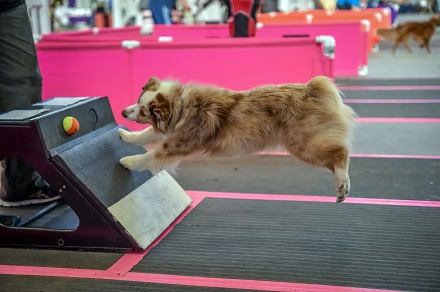
Corona: As clubs are located across the United States and Canada, locations vary widely based on geography. Teams are always looking for new venues to hold their tournaments. Tournaments are open to the public so everyone can enjoy this exciting sport.
Editor’s note: A listing of NAFA’s 24 regions, as well as clubs listed by states, is available on the website.
SDM: Are flyball competitions generally held indoors?
Corona: Primarily yes, however the West Coast and some other regions do hold tournaments outdoors – there’s a lot that goes into hosting a tournament and we don’t want to see it cancelled for weather. We have held events in everything from show barns to conference centers. The biggest issue for us is that it does take up quite a bit of space; the length of the course the dog navigates is 51 feet up and back, plus a runback area and where the handlers are when they release each dog. Any time you’re looking at a length of anything less than 100 feet, you’re looking into potential safety issues.
SDM: What else do you look for?
Corona: In addition to finding a venue or city that doesn’t have breed restrictions, we need one where there are dog-friendly hotels nearby. We’ve had a lot of success with La Quinta and Red Roof Inn properties. Typically when the host club is booking the event, they are going to be requesting the hotel to waive or reduce any type of pet fee for people in a room block.
SDM: Do you have participants who use mobile homes, and who would be interested in locations for those?
Corona: Yes, a portion of our participants do attend in RVs so we also look for RV campgrounds preferably with hook-ups. It’s a travel sport and people may travel around to different competitions across the country. They purchase fifth wheels and RVs and outfit them with built-in dog crates so that the dogs can travel safely, as well as places for people to cook and eat and sleep and so on. They’re like the RVs rock stars have.
SDM: What is your largest event?
Corona: That would be our CanAm Flyball Classic, which takes place every year in October in Indianapolis at the fairgrounds. We see teams come in from all over the U.S. and Canada. There will be up to seven rings of Flyballl going at one time.
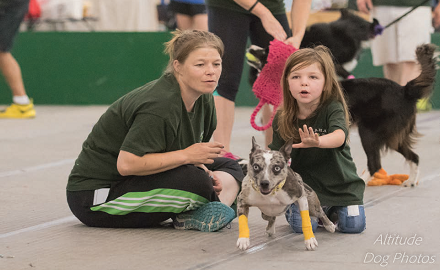
Corona: It really is – we have all ages taking part from young children to seniors. We also have a junior handler program which is a great way for children to learn respect for, and responsibility for, their dogs, and to understand what it means to be part of a team. Children are also welcome into the racing lanes with the team as long as they have adult supervision. Many children play an integral part of the team by either handling a dog, being a boxloader (placing the ball into the flyball box) or collecting the loose balls in the back of the racing lane.
SDM: Is there an age group where kids become involved?
Corona: Like many sports, they may be really involved through high school but once they enter college their participation generally tapers off. Often, they’ll come back after graduation and later introduce their own children to Flyball.
SDM: How many people attend the CanAm event?
Corona: Well, we have an interesting side note there. In 2010, our event set a world record – the largest recorded Flyball competition, verified by Guinness World Records. We had 810 individual dogs competing and when you added their handlers, and it easily put us over 1,000 people.
SDM: And everyone loves being a part of a world record attempt!
Corona: They did! We have the announcement about it on our website.
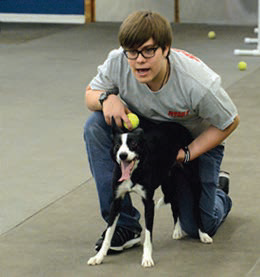
Corona: The building we rent at the fairgrounds is large enough to hold multiple racing rings in addition to the dog crating areas that are needed for our competitors. We have also established relationships with repeat vendors and are on their yearly circuit. When looking at our geography encompassing all of the U.S. and Canada, Indy is also somewhat of a midpoint for travelers.
SDM: What do you think is the best part of flyball – something people don’t often realize?
Corona: Besides the camaraderie in and between clubs, Flyball creates a deep-rooted bond with your dog. We’re really concerned about our dogs’ health and welfare, so we’re always very conscious of what they’re eating, what supplements they’re taking and their overall physical and mental well-being. These dogs get the best of care and their owners really love them. When you spend a lot of time with your dog, it really strengthens your relationship with them. Something that people don’t realize is the amount of time that is put into training these canine athletes in addition to the time commitment involved on a nearly monthly basis to attend tournaments and practices.
SDM: You mean they just think it’s about racing – which is obviously a part of it – or that it’s about fetching a ball – which is another part, but it’s also about the dog being able to do that without you running alongside him or her.
Corona: Exactly. There are many individual parts that make up the whole pattern, from learning to perform a swimmer’s turn when retrieving the ball from the Flyball box, passing another dog at the start/finish line, jumping over the four hurdles and many other components. We also work on keeping the dog’s focus; as you can imagine there are a lot of distractions; from tennis balls to treats and of course the other dogs and handlers they are competing against in the lane next to them (just a few feet away).
SDM: It’s not like the “best in show” dog show world either.
Corona: We’re not the prim and proper dog show that’s for sure. You’ll find the handlers amping up the dogs in the ring. It’s very high energy as well as loud; we don’t discourage barking or encouragement from the handlers. We’re the equivalent of drag racing for dogs, or my personal favorite, the kegger of dog sports.


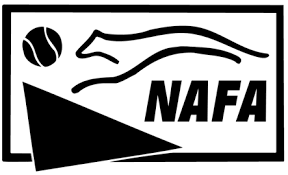 www.flyball.org
www.flyball.org